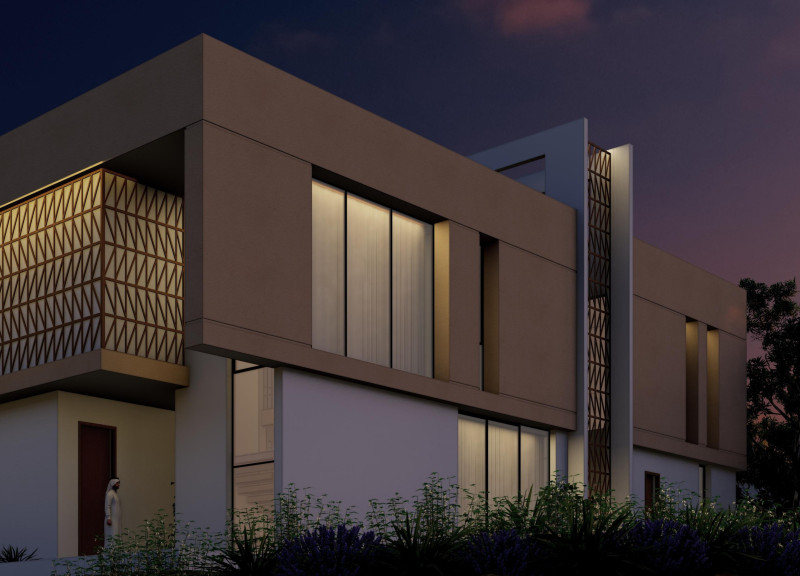5 key facts about this project
At its core, the architecture embodies a philosophy that prioritizes sustainability and user experience. The layout is thoughtfully organized to create clear paths of movement, encouraging fluid transitions between different areas of the building. Public spaces are carefully integrated, promoting social interaction among users while private areas remain accessible yet distinct, allowing for quiet reflection and personal engagement.
The selection of materials plays a significant role in the project’s identity. Each material has been chosen not only for its aesthetic qualities but also for its performance attributes. Reinforced concrete forms the structural backbone of the design, providing durability and robustness. Large glass windows are strategically placed to maximize natural light penetration, offering uninterrupted views of the surrounding landscape while maintaining a connection to the outdoors. The use of wood accents throughout the interior spaces introduces warmth, balancing the cooler tones of concrete and glass. Steel elements offer a modern touch and are utilized in various details, contributing to the overall structural integrity of the building.
Unique design approaches are evident in the building’s roofline and facade. The roof features multiple angles that create dynamic visual interest, defying conventional architectural forms. This distinctive silhouette not only enhances the aesthetic appeal but also serves practical purposes in terms of directing rainwater and optimizing solar energy. The facade is a thoughtful composition that blends different materials and finishes, striking a balance that speaks to both contemporary design and the local architectural vernacular.
Environmental consciousness is a driving force behind the project, with strategies that effectively reduce its carbon footprint. Employing passive solar design principles minimizes reliance on artificial lighting and heating, promoting sustainability while contributing to overall energy efficiency. The inclusion of a green roof integrates vegetation into the design, fostering biodiversity and improving rainwater management.
Additionally, the project reflects a commitment to engaging with the community. Public artwork installations and communal gathering spaces encourage interaction and foster a sense of belonging among residents and visitors. This engagement with the community highlights the project’s role as a cultural hub, beyond merely a physical structure.
Visitors intrigued by this architectural endeavor are encouraged to explore the design's architectural plans and sections, which provide further insights into the spatial organization and layout. The architectural designs showcase the meticulous attention to detail and the thoughtful integration of elements that contribute to the project’s narrative. By reviewing the architectural ideas presented in the full project documentation, one can gain a comprehensive understanding of how this design not only meets contemporary needs but also responds to its contextual environment.


 Rania Abdelrahman Osman Bashir
Rania Abdelrahman Osman Bashir 























